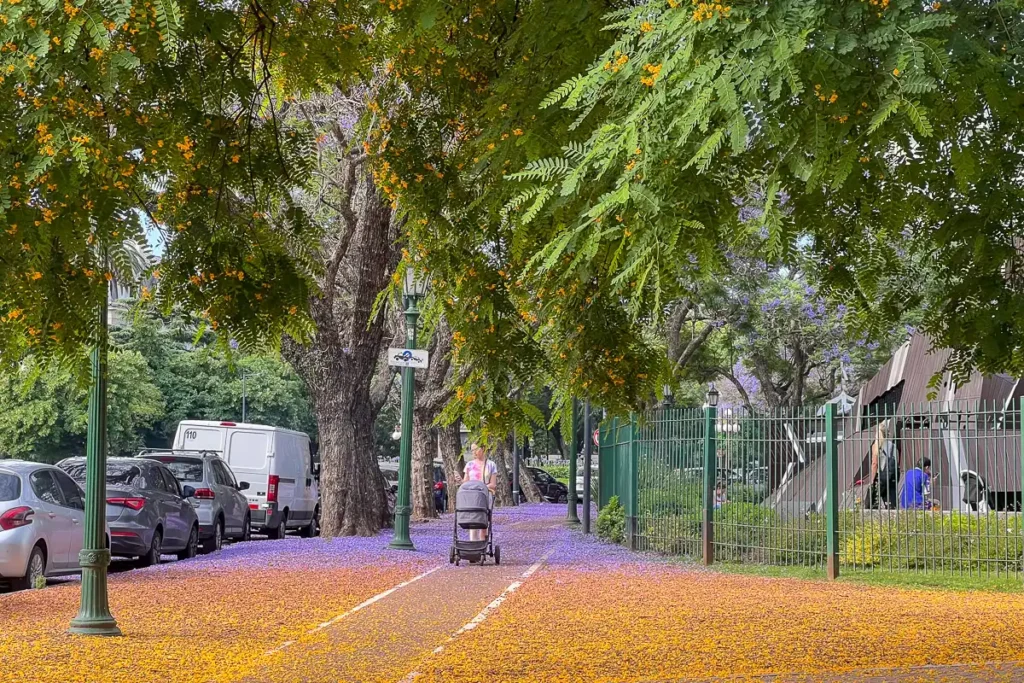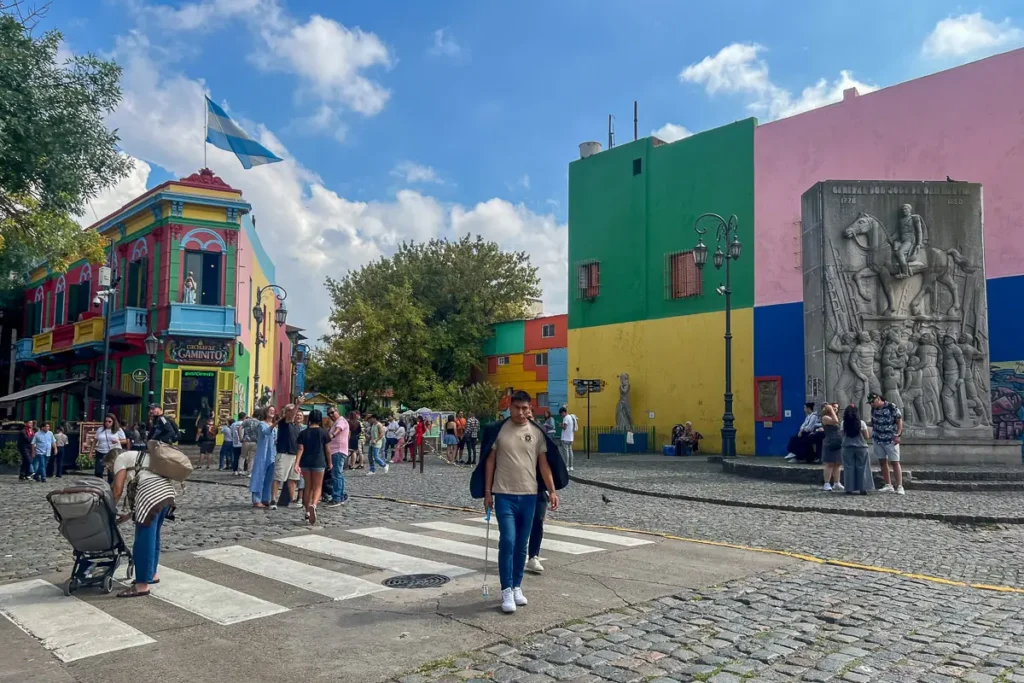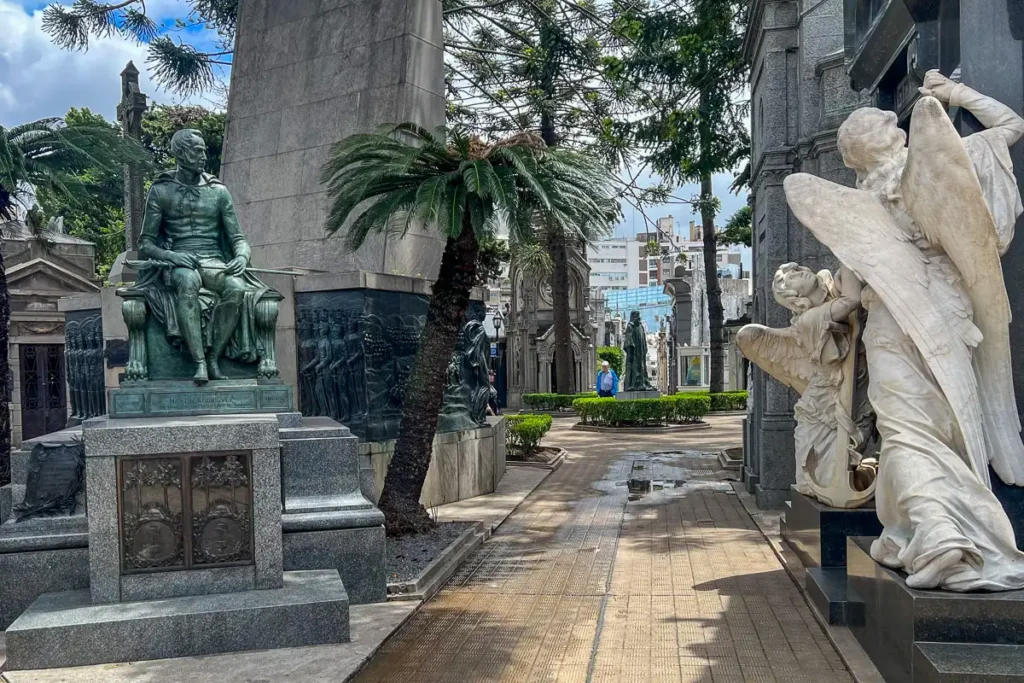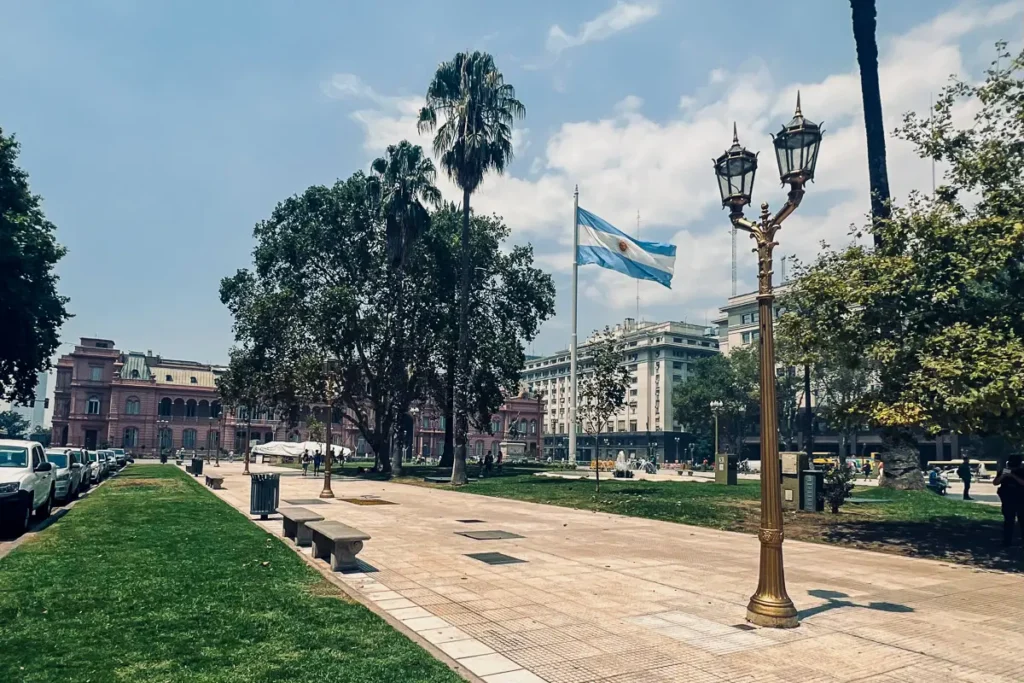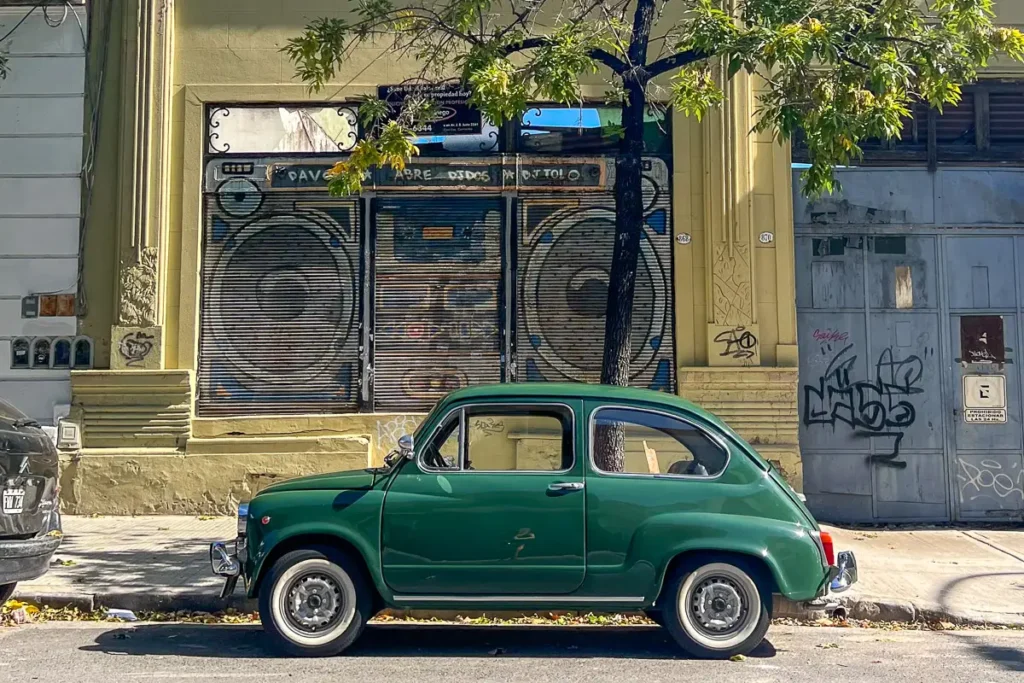We last reviewed this post on September 18th, 2025
Lakes, gardens, and leafy escapes in Palermo’s most beloved parks.
If you feel like taking a break from the noise and pace of the city, this route is for you. In Buenos Aires, nature is never too far away. There’s an entire green corridor running through Palermo that offers lakes, gardens, and peaceful parks to rest, wander, or have a picnic.
In this self-guided route, we’ll take you through the heart of the city’s most beloved natural spaces — places where locals go to walk, bike, read, or simply unwind. You’ll also discover cultural icons, surprising buildings, and beautiful spots you might not expect to find in a busy metropolis.
Let’s begin with the city’s largest and most popular green area.
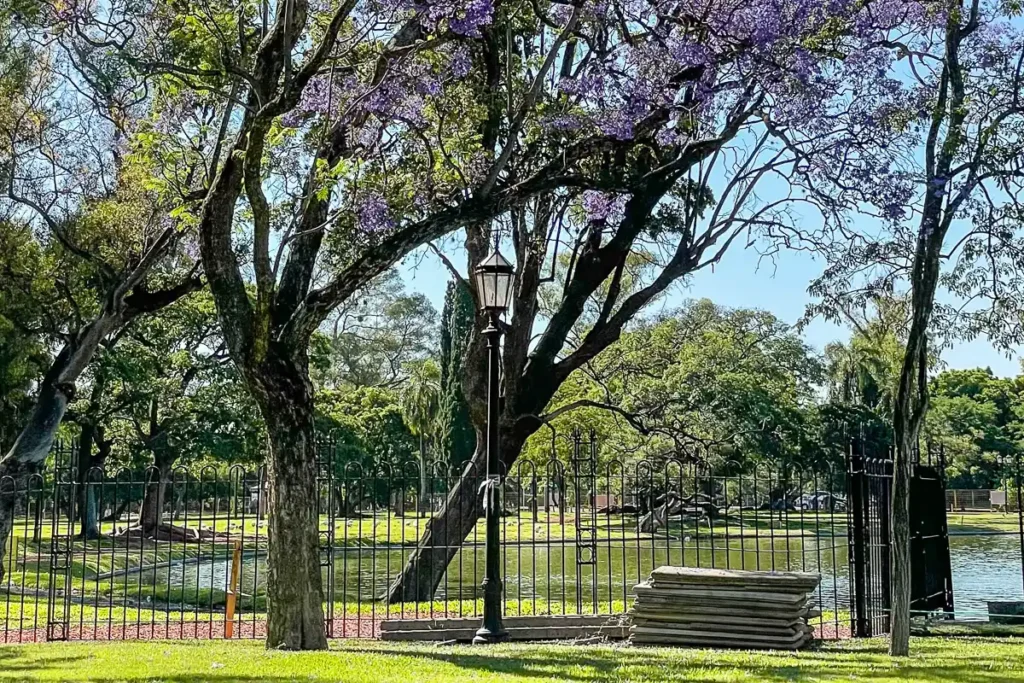
Table of Contents
Bosques de Palermo (Palermo Woods)
Spanning more than 25 hectares, Bosques de Palermo is a collection of interconnected parks, not just one. While locals often refer to the whole area by that name, it includes several parks with individual identities.
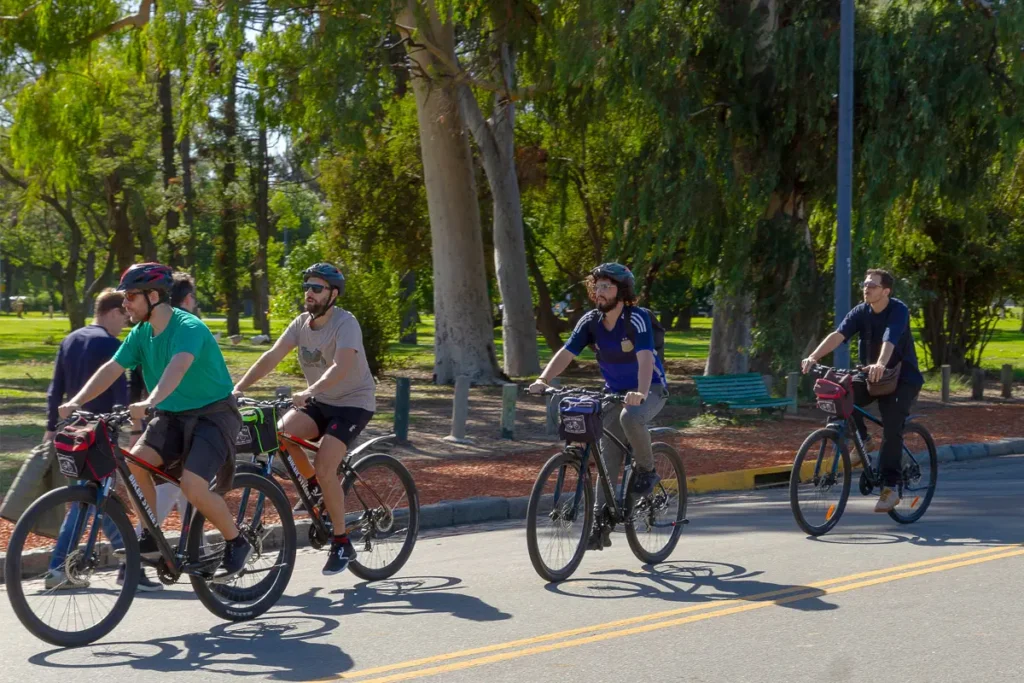
These green spaces are perfect for a walk, a run, a picnic, or just some quiet time surrounded by nature. You’ll also spot four artificial lakes filled with ducks, swans, and turtles, creating a small ecosystem right in the middle of the city.
Don’t be surprised if you find people biking, rollerblading, doing yoga, or sipping mate under the trees. This is one of the most loved places by Buenos Aires residents — and a great spot for travelers to experience the city’s slower, more relaxed rhythm.
Feeling hungry? Try one of the many food trucks in the area. The classic options are choripán, churrasquito (steak sandwich), and bondiola (pork shoulder sandwich). Just remember: street food here is usually cash-only, so it’s a good idea to bring some pesos with you.
El Rosedal (The Rose Garden)
In the heart of Palermo Woods, El Rosedal is a stunning park filled with more than 18,000 rose bushes and over 100 varieties of roses. The garden is beautifully maintained and ideal for long, slow walks.
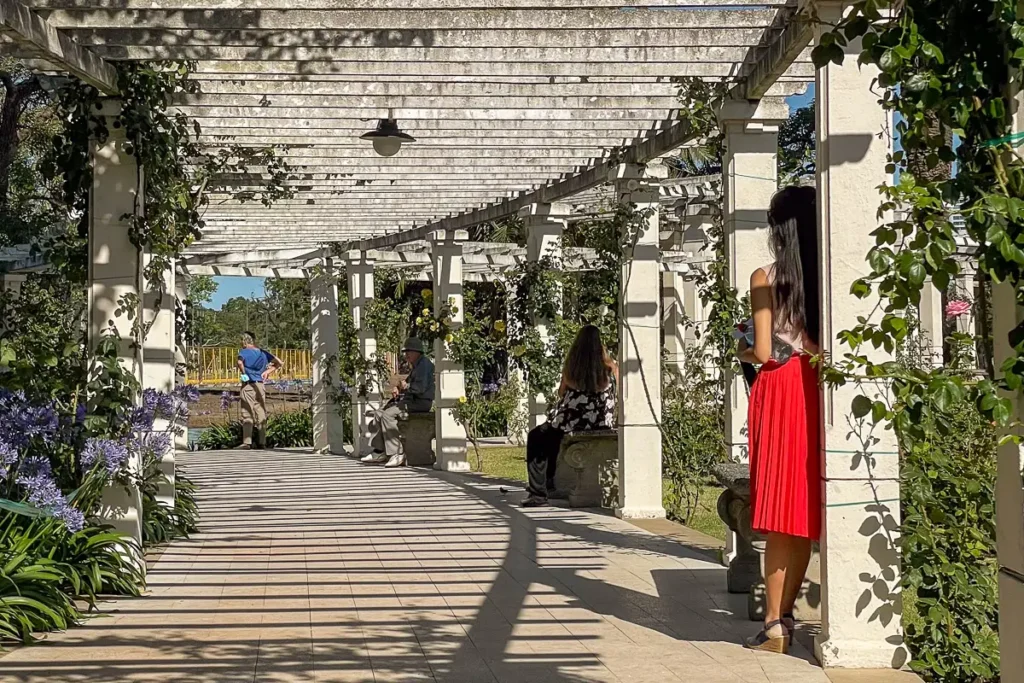
You’ll find small bridges, pergolas, a poets’ garden with bronze busts of literary figures, and quiet benches for taking it all in. Many people come here for photo shoots — especially for 15th birthday celebrations (a big milestone in Argentina) and weddings.
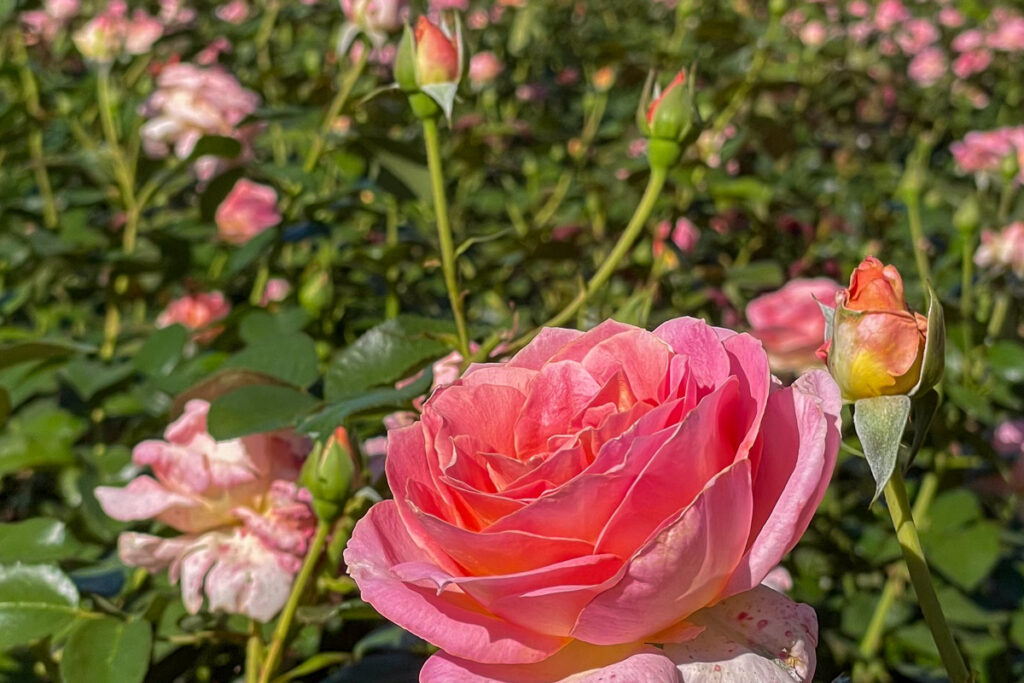
Entrance is free, and the park is open from Tuesday to Sunday, 10:00 a.m. to 6:00 p.m. (last entry at 5:00 p.m.). It’s closed on Mondays and most national holidays in Argentina. The park may also be closed after rain to preserve its paths.
Planetario Galileo Galilei
Just across from El Rosedal, you’ll see a curious round building with a futuristic look: that’s the Planetario, one of the most iconic buildings in Buenos Aires.
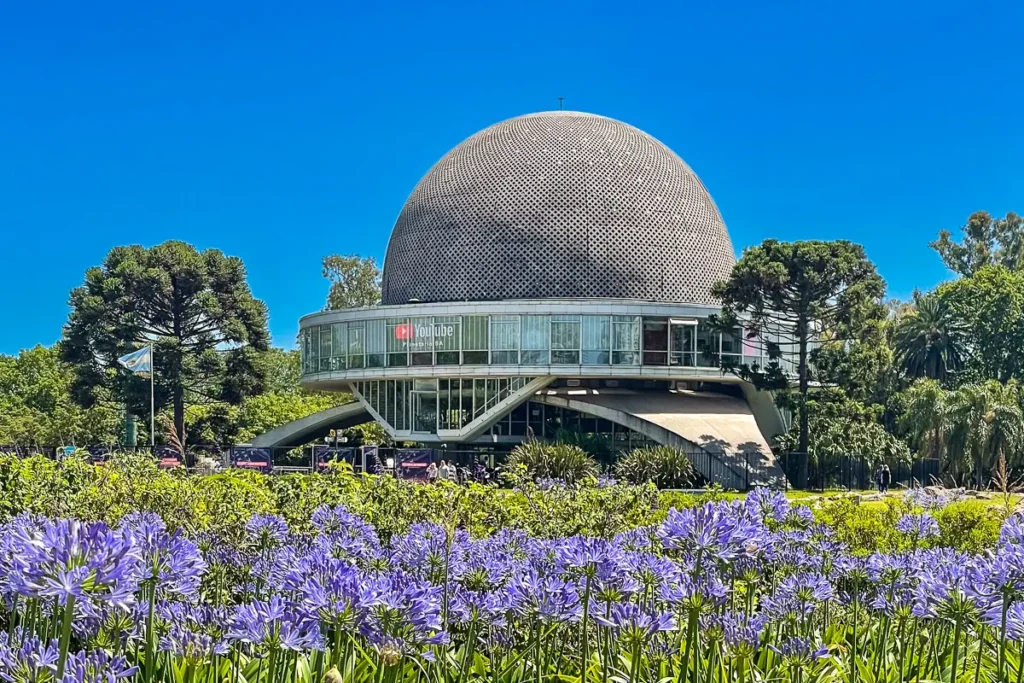
It was designed to teach astronomy to the public, offering educational shows in its domed theater. At the entrance, you’ll spot three real metallic meteorites that were found in northern Argentina.
Some say the building looks like Saturn; others think it looks like a spaceship, a golf ball… or even a giant colander! At night, it lights up with colors, giving it a sci-fi glow. Even if you don’t go inside, it’s a great place for photos.
Tickets can be bought online, and they often sell out on weekends and during school holidays. So if you’re interested in a show, it’s a good idea to check their official website and book in advance.
Nearby, you can also visit the Monumento a Sarmiento, a striking golden sculpture by Auguste Rodin, located close to the Planetarium — a nice visual stop for art lovers.
Jardín Japonés (Japanese Garden)
A peaceful and beautifully designed space, the Japanese Garden brings a touch of Japan to Buenos Aires. Inside you’ll find cherry trees, azaleas, lilies, koi-filled ponds, and red wooden bridges that connect small islands.
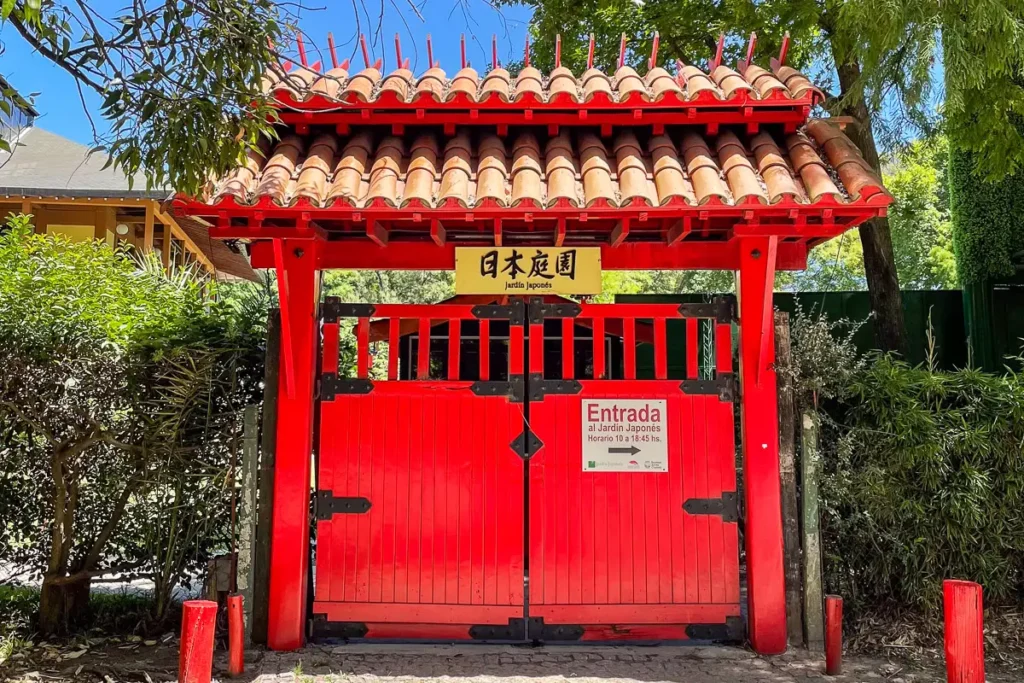
There’s also a building with a Japanese cultural center, a bonsai nursery, and a traditional restaurant — considered one of the best places for sushi in the city.
The ticket for international visitors is around ARS 13,500 (approx. USD 11 / EUR 10 (July 2025)), and it’s more affordable for Argentine residents. The garden is usually closed on national holidays, so it’s a good idea to check their official website before visiting. It’s definitely worth it if you’re looking for a calm and unique spot.
Ecoparque
Across the avenue from the Planetario, you’ll find Ecoparque, a space with a complex past and an evolving future. This was once the city’s zoo, but it closed in 2016 to end the practice of keeping animals in cages in the heart of the city.
The space is now being transformed into an educational ecological park. You’ll still see some animals — including maras, peacocks, capybaras, a giraffe, a hippo, and a rhea — as they await transfer to sanctuaries.
One of the most interesting aspects of the park today are the old animal enclosures, which remain as architectural relics. They were designed to represent the animals’ countries of origin, so you’ll see buildings with Chinese, Moorish, Hindu, and Greco-Roman elements. A strange mix — but full of photographic charm.
It’s a lovely short stop, especially for photography lovers and architecture fans — not so much for those expecting an interactive experience.
Jardín Botánico (Botanical Garden)
About a 15-minute walk from the Planetario, near Plaza Italia, you’ll find the Botanical Garden, a lush green space that’s especially welcome on hot days — the dense trees keep it several degrees cooler than the city outside.
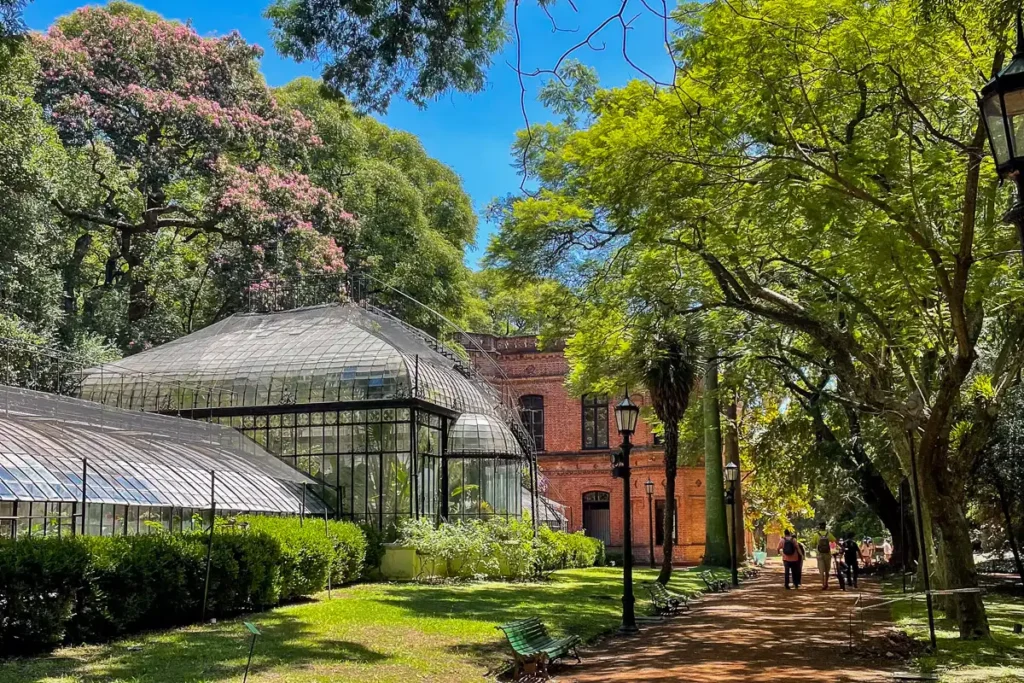
The garden features more than 6,000 plant species, greenhouses, fountains, and sculptures. You’ll also find a butterfly garden, designed to attract and protect local butterflies, and a senses garden, filled with aromatic plants you can smell and touch — a favorite with schoolchildren and visually impaired visitors.
At the heart of the garden sits a stately English-style house, where the famous French-Argentine landscaper Charles Thays once lived. He was the mastermind behind many of the city’s green areas — including this very one.
The garden is right next to Ecoparque and just a few blocks away from Palermo Soho, so you won’t need to walk far to reach your next stop.
Palermo Soho & Palermo Hollywood
After so much green, it’s time to end the route with a touch of city life. If you walk just a few blocks away, you’ll find two of the liveliest districts in Buenos Aires: Palermo Soho and Palermo Hollywood.
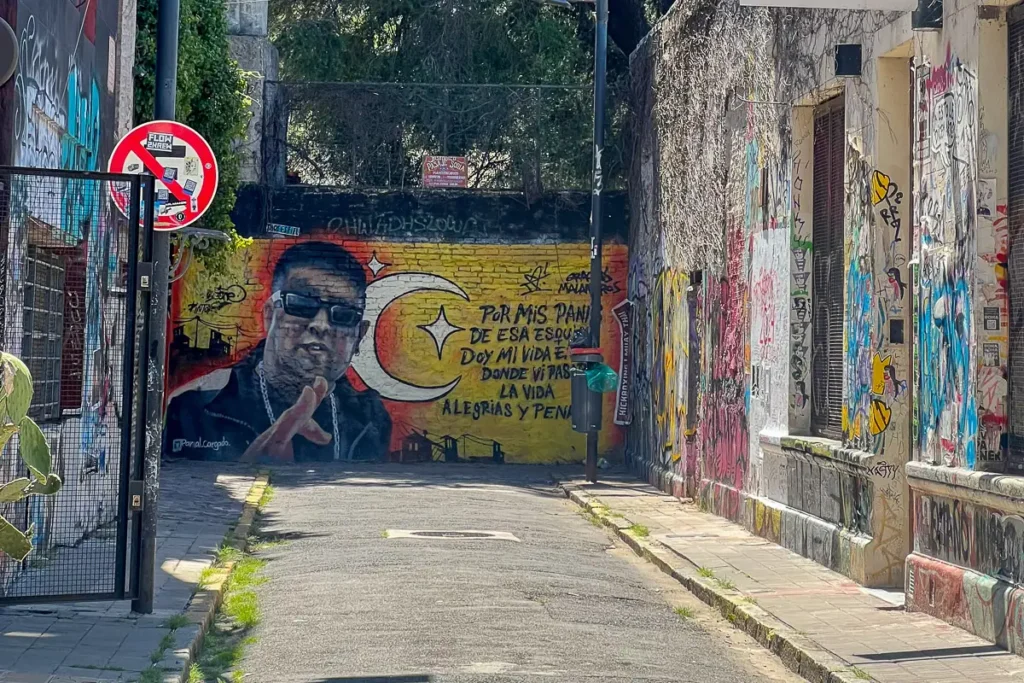
These areas are full of energy, with boutique shops, trendy cafés, beer gardens, restaurants, and nightlife. They’re ideal places to grab a craft beer, browse local designers, or enjoy a night out — even on a Tuesday.
Both areas have become symbols of modern Buenos Aires, mixing creativity, fashion, and gastronomy with the city’s laid-back personality.
Conclusion: Nature and City in Perfect Balance
This route through Palermo’s green areas shows just how much Buenos Aires has to offer beyond its busy streets and historic landmarks. You’ll find locals walking their dogs, families having picnics, couples enjoying a boat ride, or teenagers skating with music in the background — real moments of local life that you can experience firsthand.
And once you’re done recharging in nature, the city’s trendiest corners are just a few blocks away.
Whether you explore it all or just choose a few stops, this route is an ideal way to enjoy a different side of Buenos Aires — one full of fresh air, calm spaces, and unexpected beauty.
